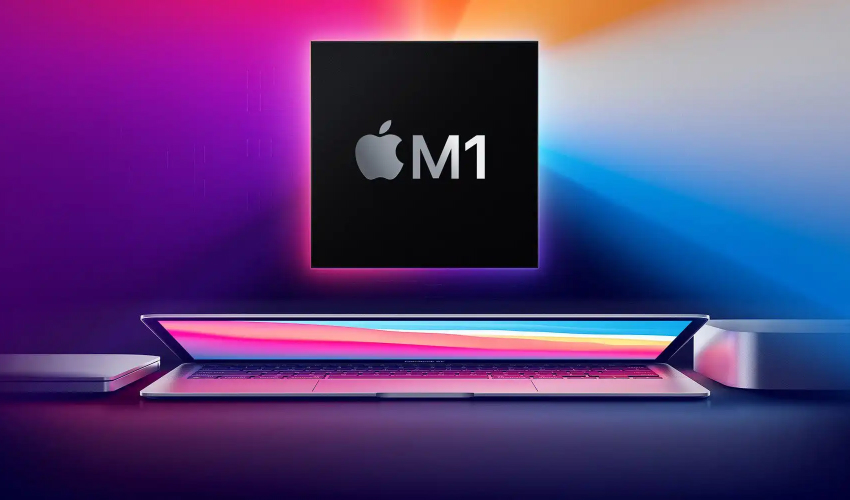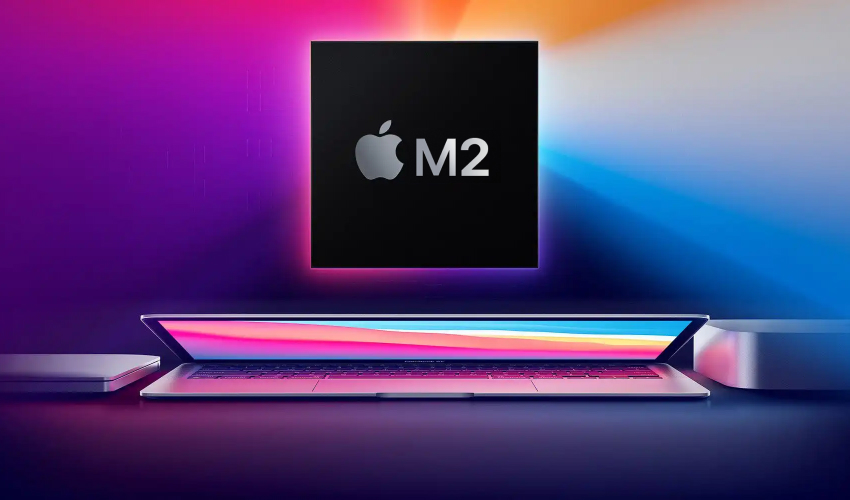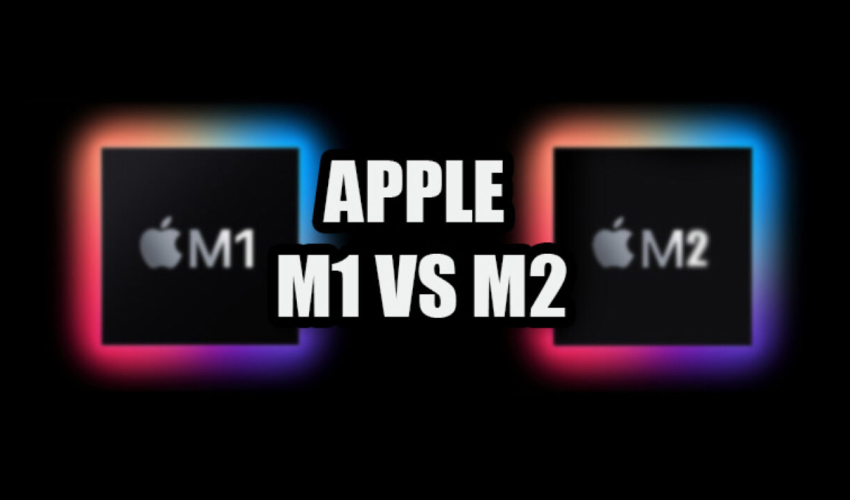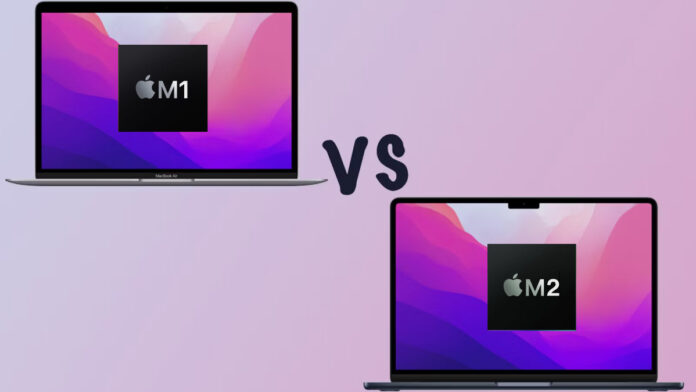In the ever-evolving world of technology, Apple M1 vs. M2 Chip Buyer’s Guide have been at the forefront of innovation, reshaping the computing landscape. The transition from Intel to Apple Silicon has ushered in a new era of performance and efficiency.
In this buyer’s guide, we unravel the mysteries of Apple’s M1 Vs M2 chip. The choice of the exemplary chip can significantly impact the capabilities of your Apple device, be it a MacBook, Mac Mini, or any other Apple product. As we delve into the M1 versus M2 comparison, the anticipation surrounding the M2 chip’s improvements promises an exciting exploration of cutting-edge technology.
Understanding the M1 Chip
The M1 chip, a groundbreaking technology, boasts a 5-nanometer architecture featuring an 8-core CPU (4 high-performance and four high-efficiency cores), an 8-core GPU, and a unified memory architecture. This design ensures seamless multitasking, graphics rendering, and energy efficiency. Currently, the M1 chip powers several Apple devices, including the MacBook Air, MacBook Pro, Mac Mini, and the latest iPad Pro, elevating their performance and user experience.

Performance-wise, the M1 chip delivers a remarkable leap in speed and responsiveness, excelling in tasks like video editing, gaming, and AI-related computations. It’s also energy-efficient, providing extended battery life for laptops. However, early limitations included software compatibility for some third-party applications, which Apple has been addressing through updates and developer support.
The Promise of the M2 Chip
In June 2022, Apple unveiled the M2 processor, marking a significant upgrade from its predecessor, the M1. One standout improvement was the inclusion of approximately 25% more transistors, along with enhanced GPU cores.

The launch of the M2-powered MacBook lineup closely mirrored the rollout of the M1 chip. Apple maintained a familiar naming convention, offering Pro and Max variations alongside the standard M2 model. The Ultra variant was absent, a potential release for future Studio desktops.
The base M2 model debuted on the 13.6″ MacBook Pro in June 2022, followed by the 13.6″ MacBook Air in the subsequent month. The M2 found its way into the Fall release of the iPad Pro and the Mac Mini, which hit the market in 2023.
The M2 chip largely retained the M1’s architecture, boasting eight CPU cores—four for high performance and four for efficiency. A significant upgrade came in the form of expanded core options, with the MacBook Pro offering a ten-core GPU, while the MacBook Air provided a choice between an eight or ten-core GPU configuration. Memory capacity grew substantially, with the M2 supporting up to 25GB. Furthermore, it featured a single ProRes accelerator, enhancing its multimedia capabilities. Notably, the M2 chip packed approximately 20 billion transistors onto its compact 155mm chip, showcasing Apple’s relentless pursuit of cutting-edge technology.
Also See : When is the Best Time to Buy a New iPhone?
M1 vs. M2
The M1 and M2 chip difference reveals crucial distinctions in Apple’s silicon evolution. The M1, unveiled in November 2020, stemmed from the A14 Bionic chip, while the M2 draws its lineage from the iPhone 13’s A15 Bionic chip. Both chips share an eight-core CPU configuration featuring four high-performance and four-efficiency cores. The M2, however, elevates the game with modest but impactful improvements in performance and efficiency, along with adding up to two extra GPU cores.

Apple claims the M2 chip delivers a substantial boost in tasks like video editing, making Final Cut Pro 40 percent faster for intensive workflows and enhancing Adobe Photoshop’s performance by up to 20 percent.
The M2 introduces a media engine that supports hardware-accelerated ProRes and ProRes RAW video encode/decode, a significant upgrade over the M1’s focus on H.264 and HEVC video acceleration. This enhancement accelerates video-related tasks, allowing smoother playback of 4K and 8K video streams and faster video project conversions to ProRes.
For everyday users, the M2 might not significantly improve the M1 in regular tasks. However, it shines in professional workflows, where performance enhancements become evident. For a detailed comparison of the M1 and M2 chip difference, consult our comprehensive guide.
Memory
Both the M1 and M2 chips provide configurations of 8GB or 16GB of unified memory, catering to various user needs. However, the M2 takes it further by offering an impressive 24GB top-tier memory option. This added memory capacity proves invaluable for users engaged in demanding multitasking or working with substantial data and media assets.
Furthermore, the M2 showcases its prowess with a remarkable memory bandwidth of 100GB/s, significantly surpassing the M1’s 68.25GB/s. This boost in memory bandwidth translates to the latest MacBook Air’s ability to access more memory faster, ensuring smoother and more efficient performance for memory-intensive tasks and applications. This camera offers double the resolution and vastly improved low-light performance compared to the previous generation.
This enhancement promises to elevate the video calling experience to a new level of clarity and detail, making it a notable improvement over the 720p camera found in the M1 model. Whether it’s professional video conferencing or connecting with loved ones, the M2 MacBook Air’s camera upgrade ensures that your visual interactions are sharper, crisper, and more enjoyable than ever before. This is the main difference between m1 and m2 chip.
Speakers
The M2-powered MacBook Air takes an audio leap with a four-speaker sound system cleverly integrated between the keyboard and the display. Apple says this setup promises “improved stereo separation and vocal clarity,” delivering a richer and more immersive audio experience. Meanwhile, the M1 MacBook Air maintains a stereo speaker configuration, which should suffice for most users.
Both devices support expansive stereo sound and Dolby Atmos playback, ensuring high-quality audio output. However, for those who crave enhanced sound quality and a more immersive audiovisual experience, the M2 MacBook Air’s four-speaker system brings an enticing upgrade. This is the main difference between m1 and m2 chip.
Ports and Charging
The M2-powered MacBook Air takes audio to the next level by supporting high-impedance headphones, catering to audio professionals and enthusiasts seeking top-notch sound quality. One notable addition is reintroducing the MagSafe port on the M2 MacBook Air. This feature allows users to connect and disconnect the charging cable effortlessly, preventing accidental cable disconnections and providing a convenient LED indicator for charging status.
Both models maintain two Thunderbolt ports, ensuring seamless accessory connectivity. However, the presence of the MagSafe port on the M2 model offers a practical advantage. It frees up a Thunderbolt port that would otherwise be used for charging, providing users with more flexibility for connecting accessories while keeping their MacBook Air charged. This is the main difference between m1 chip vs m2 chip.
Also See: 15-inch MacBook Air vs. 16-inch Intel MacBook Pro
What is the difference between M1 and M2 Chip?
The primary difference between Apple’s M1 and M2 chip lies in their generations and capabilities. The M1, introduced in late 2020, is based on the A14 Bionic chip and marked Apple’s transition to its custom silicon for Macs. In contrast, the M2, derived from the A15 Bionic chip from the iPhone 13, is its successor, released later.
The M2 offers incremental improvements in performance and efficiency, boasting additional GPU cores and enhanced memory bandwidth. It excels in handling demanding tasks and provides a superior 1080p FaceTime camera. The M2’s high-impedance headphone support and the return of the MagSafe port also differentiate it from the M1, enhancing user experience and versatility. These are the main difference between m1 chip vs m2 chip.
In conclusion, the M1 vs. M2 Chip Buyer’s Guide reveals Apple’s evolutionary stride in its silicon journey. While the M1 was a groundbreaking introduction, the M2 chip takes the baton, offering notable advancements in performance, efficiency, camera quality, audio capabilities, and charging convenience.
The choice between these two chips ultimately depends on individual needs, with the M2 shining in professional workflows and offering enticing upgrades for those who demand the best. As technology evolves, Apple’s dedication to innovation ensures users have powerful, future-ready options to fuel their creativity and productivity. The M2 sets a new standard, promising an exciting future for Mac users.


